

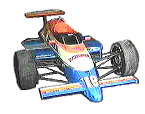 SPEED
SPEED
Fascination with speed must be as old as the human race. First on foot, then on fast domesticated animals, and finally on complex mechanical devices people have been racing for centuries. Over the centuries much human ingenuity has been focused on the design and development of transportation tools. While racing for fun is a popular sport, race car designing has spin-off which penetrate into the everyday live as the transportation technology gives us faster, more reliable an more comfortable conveyances.
Chasing after speed records presents many challenges. Runners and skiers have to work on their condition and on the technical skills. So do race car drivers. Engineers and scientists discover and apply physical principles to push the speed limits of mechanical devices.
People and goods are moved though air, water and land (and interplanetary space.) Each of these environments presents unique challenges to the vehicle designer. This article will be limited to speed challenges of land-based vehicles.
Speed, Stamina and Skill.
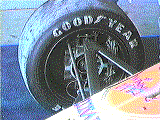 Self-propelled mechanical vehicles powered by heat engines date back to the middle of the nineteenth century. Inventors like James Watt were replacing animal power with fossil fuel power, starting the era of trains, steamboats, and automobiles.
Automobile racing started simultaneously on the European continent, in England and on the American continent. Some drivers opted for short distance sprints where speed was the goal, others preferred endurance races where both the driver and the car were challenged by poor roads and difficult driving conditions. The first American car race took place in 1895.
Well organized championship racing dates back to 1902.
Self-propelled mechanical vehicles powered by heat engines date back to the middle of the nineteenth century. Inventors like James Watt were replacing animal power with fossil fuel power, starting the era of trains, steamboats, and automobiles.
Automobile racing started simultaneously on the European continent, in England and on the American continent. Some drivers opted for short distance sprints where speed was the goal, others preferred endurance races where both the driver and the car were challenged by poor roads and difficult driving conditions. The first American car race took place in 1895.
Well organized championship racing dates back to 1902.
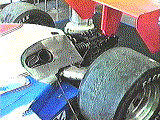
Gradually rules were introduced by various official and semi-official bodies to bring some order into the chaos. 1909 saw the first AAA sanctioned championship. Both sprint racing and endurance racing were subject to AAA rules. In 1909 three races were held in Indianapolis on a dirt track which was eventually severely damage by the cars. The track was repaired and paved with three million bricks, hence the Indy track nickname "The Brickyard". The brick surface lasted until 1946.
1911 witnessed the first Indy 500 race won by Ray Harroun. The average speed was 74.59 mph. To protect the drivers jockeying for position during the first lap, the race drivers had to follow a pace car.
In 1915 the first national championship driver exceeded 100 mph. A Peugeot in Chicago posted 101.8 mph. It took another four years before the 100 mph mark was passed in Indianapolis in 1919. 1925 saw a 110 mph lap, 1927 a 120 mph lap. During the first three decades of the century Indianapolis boasted the only paved track. Car racing took place for the most par t on horse racing dirt tracks or on highly banked wooden "board tracks."
Faster speeds, better than 140 mph were possible on wooden tracks.
During depression board tracks disappeared racing outside Indy took place on dirt tracks at fair grounds. A practice that continued into the sixties.
The Indianapolis Motor Speedway was owned by an air ace, Eddie Rickenbacker, who put the property up for sale in 1945. To avoid subdivision race drivers persuaded Anton "Tony" Hullman Jr., an Indiana industrialist, to buy the facility. In 1946 the Indy 500 ran again. It was still the only paved track in the country.
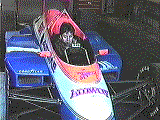
By now cars were being built especially for the Indy 500. Front-wheel drive car gave way to rear wheel drive in 1950-51. 1952 saw the first "roadster". The chassis was widened to allow the drive shaft to run beside the driver instead of under him. The engine was tilted to lower the center of gravity. 1963 saw a major innovation in Indy car racing, the Lotus 25, modified for Indy racing. The center of gravity was lowered for faster turns monocoque (unibody) construction added rigidity and reduced weight (sheet metal is used rather than welded tubes.) In 1965 Jim Clark averaged 150 mph for full 500 miles.
In 1966 the first turbocharged engine was introduced, providing more power by mechanically forcing the air through the engine. The first turbocharger car won the Indy 500 in 1968 (Bobby Unser.) The tires were getting wider. In the 1969 Indy 500, Mario Andretti used "wings" to provide a downforce for better traction. 1971 saw the first wedge shaped McLarens with a side radiator. Dirt races were removed from Indy Car championships.
1972 saw the first official 200 mph Indy qualifying lap with Jerry Grant with an Offenhauser engine.
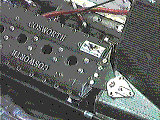
The 1980 Chaparral-Cosworth was one of the first cars to use "ground effects". Chaparral 2K has a tunnel-like shaped bottom that produces a low pressure under the car to let the atmospheric pressure push the car to the ground. This greatly increases traction and stability. Understanding the "ground effect" requires the understanding of the physical properties of fluids, coming up later this semester.
In 1981 the Michigan 500, another Indy Car race, was televised live by NBC-TV. This is the first flag-to-flag live TV coverage of a car race.
Today the speed spectacle continues. In 1991 the term IndyCar became the official designation of Indianapolis style racing. IndyCar supersedes the acronym CART (Championship Auto Racing Teams.) There are four official types of tracks: superspeedways (ovals longer than 1 mile), short ovals, temporary roads courses (usually closed-off city streets), and permanent (natural terrain) roads. Each of these tracks focuses on different driver skills. A driver that excels on all of these is the racing equivalent of an Olympic decathlon champion
Raw Speed - World Land Speed Racing
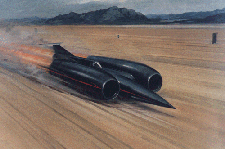
On October 15 1997 the first ever supersonic World Land Speed Record was set in Nevada by Andy Green of Great Britain in
ThrustSSC. Actually the speed of sound was exceeded on land for the first time on October 13, 1997. That run did not qualify for the record because of the peculiarity of the rules. Unlike racers in an IndyCar race, the car and driver going after the World Land Speed Record have only one goal: to complete a round trip on straight terrain, alone, as fast as they possibly can. To break a previous record the have to clock a speed increase of at least 1%.
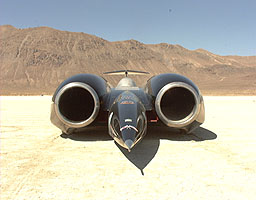
The rules are set by the International Automobile Association, the FIA (Federacion Intrnational de L'Automobile) organized in France at the turn of the century. The Land Speed Record is the average of two runs in opposite directions on the same course within an hour's time.
Under these conditions record speed have steadily climbed over the years to culminate with the supersonic speed in October of 1997. Here is a short list of landmark speeds..
- 1905, at Daytona, 104.65 mph
- 1922, at Brooklands, 133.75 mph
- 1927, at Daytona, 203.792 mph
- 1932, at Daytona, 253.97 mph
- 1935, at Bonneville, 301.129 mph
- 1938, at Bonneville, 350.20 mph
- 1963, at Bonneville, 407.45 mph
- 1964, at Bonneville, 468.72 mph
- 1964, at Bonneville, 526.28 mph
- 1965, at Bonneville, 555.127 mph
- 1965, at Bonneville, 600.601 mph
- 1983, at Blank Rock, 639.803 mph (record holding until 1997!)
- 1997, at Blank Rock, 763.035 mph
For more detailed information follow the links provided at the bottom of this page.
Only a handful of places are suitable for this kind of race. The hard white sand on Daytona beach, 23 miles long and 500 feet wide at low tide, has been used for automotive speed trials since 1903. In the 30's the trials were moved to Bonneville Salt Flats and later to the dry lake bed of the Black Rock Desert in Nevada where the speed of sound is 760 mph. At sea level the speed of sound is 732 mph.
Designing a car to win a Land Speed record requires a mix of physics, practical knowledge, talent and dedication. The ingredients that go into a winning product are the engine, the size, shape, and weight of the car, the fuel load, the surface on which the car will run an of course the driver. The optimum design is the best compromise that satisfies a complicated set of conflicting requirements.
ThrustSSC uses a jet engine. The alternative, which the designers rejected, would have been a rocket engine. The next decision to make was the shape of the car and the location of the driver. A single engine needle-nosed design, to minimize air drag would have been ideal. However, to obtain the power required for supersonic speed the engine would have to be very large and the driver would be located either in front or behind this huge engine, not an ideal location. The designers opted for a two-engine design, with the driver seat between the two engines.
A land based vehicle is subject to the retarding force of the air the retarding force that the ground exerts on the wheels. The rolling wheel drag can be as much as half the total drag. ThrustSSC uses aluminum wheels, carefully designed to provide stable traction with a small enough drag penalty.
The design paid off and ThrustSSC is now World Land Speed record holder and the first official supersonic car.
The ThrustSSC photos come from the Thrust Photo-Gallery web site where they are distributed without restrictions. IndyCar images were taken by the author.
Further study links:
General:
1.  2.
2.  3.
3.  4.
4. 
Indy:
5.  6.
6. 
ThrustSSC:
7.  8.
8.  9.
9. 
For extra credit answer the following questions.
What are differences between jet engines and rocket engines? Why did the ThrustSSC designers opt for the jet engine?
 Why did the ThrustSSC designer decide against placing the driver in front or behind the engine?
Why did the ThrustSSC designer decide against placing the driver in front or behind the engine?
 What was the fuel used at Black Rock? What fuel do Indy cars use?
What was the fuel used at Black Rock? What fuel do Indy cars use?
 What was the maximum acceleration of the TrustSSC? What are the typical accelerations in Indy cars?
What was the maximum acceleration of the TrustSSC? What are the typical accelerations in Indy cars?
©1998 IUPUI, all rights reserved.




 SPEED
SPEED
 Self-propelled mechanical vehicles powered by heat engines date back to the middle of the nineteenth century. Inventors like James Watt were replacing animal power with fossil fuel power, starting the era of trains, steamboats, and automobiles.
Automobile racing started simultaneously on the European continent, in England and on the American continent. Some drivers opted for short distance sprints where speed was the goal, others preferred endurance races where both the driver and the car were challenged by poor roads and difficult driving conditions. The first American car race took place in 1895.
Well organized championship racing dates back to 1902.
Self-propelled mechanical vehicles powered by heat engines date back to the middle of the nineteenth century. Inventors like James Watt were replacing animal power with fossil fuel power, starting the era of trains, steamboats, and automobiles.
Automobile racing started simultaneously on the European continent, in England and on the American continent. Some drivers opted for short distance sprints where speed was the goal, others preferred endurance races where both the driver and the car were challenged by poor roads and difficult driving conditions. The first American car race took place in 1895.
Well organized championship racing dates back to 1902.




 2.
2.  3.
3.  4.
4. 
 Why did the ThrustSSC designer decide against placing the driver in front or behind the engine?
Why did the ThrustSSC designer decide against placing the driver in front or behind the engine?
 What was the fuel used at Black Rock? What fuel do Indy cars use?
What was the fuel used at Black Rock? What fuel do Indy cars use?
 What was the maximum acceleration of the TrustSSC? What are the typical accelerations in Indy cars?
What was the maximum acceleration of the TrustSSC? What are the typical accelerations in Indy cars?